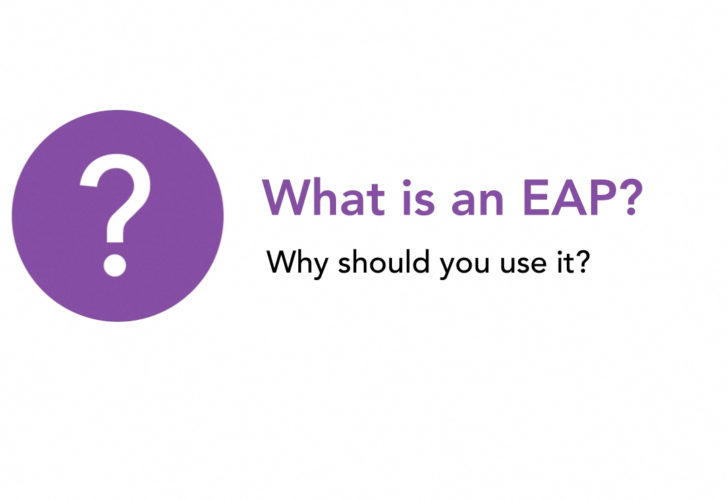What is an EAP (FAQs)
By The Bailey Group Staff
Published September 3, 2013

An Employee Assistance Program is an employer-sponsored program that offers services or referrals to help employees deal with personal problems. Traditionally, the focus was drug and alcohol abuse, but many employers have expanded programs to include a variety of issues.
Employee productivity is a vital aspect to the success of any business. At times, employees may be overwhelmed by personal or behavioral problems to perform at their highest level. For example, according to the American Institute of Stress, approximately 1 million workers are absent on an average workday due to stress. Furthermore, higher stress can lend itself to higher health risks and more costly health claims. Similarly, psychological problems, substance abuse, financial troubles and other personal issues can lead to lower productivity and focus during work, increased absenteeism and higher health care costs. An Employee Assistance Program (EAP) can address these issues and help employees tend to their personal needs, leaving you with healthier, happier and more productive employees.
As an Employer, Why should I offer an EAP?
When employees are distracted by stressful personal or life situations, they are unfocused at work and tend to be absent more often. Their health may suffer as a result, leading to higher medical costs. Obviously, these circumstances are undesirable for an employer, but it is costly to recruit and train a replacement for the struggling employee, especially if that individual was formerly, and has the potential to once again be, a valuable asset to the company.
A better solution for many employers is to offer their employees assistance in handling their personal issues in order to can improve their situations and regain their former productivity levels and value to the company. EAPs can provide that assistance. Once an EAP is implemented, it can help the employer attract and retain employees, lower health care and disability claims costs, increase productivity and morale, and lower absenteeism.
In addition, any government contractors or employers receiving federal grants are required to maintain a drug-free workplace. Part of fulfilling that requirement can include an EAP with a drug-free component that offers education, awareness, testing and counseling.
The Makeup of an EAP
EAPs can vary from employer to employer, but most have common elements. Some programs are limited and stick to alcohol and drug abuse, but many programs offer expanded services that address a variety of areas in an employee’s life. The most important consideration is whether the problems and issues covered are ones that adversely affect the employee’s job performance. Typical issues addressed include:
- Alcohol or substance abuse
- Divorce or marital problems
- Stress management
- Crisis intervention
- Child care or eldercare
- Eating disorders
- Gambling addiction
- Psychological or psychiatric problems
- Financial or legal problems
- Consultation services and training for managers regarding employee performance
Depending how an EAP is structured, it could offer employee education, evaluation, hotlines, counseling and/or referrals. It could be an in-house program, outsourced through an independent EAP provider or a combination of the two.
There are different types of EAPs, but research suggests that the most effective ones offer more comprehensive services and integrate with the employer’s health plan, prescription drug plan, disability benefits and wellness program. Integration can allow the EAP to serve as a preventive measure to address lifestyle issues that could lower health care and disability costs in the long run.
Return of Investment with an EAP
The cost of an EAP can vary depending on which services are offered, whether it is administered in-house or outsourced and the number of counselors employed. Also included in the cost is the time employees spend away from work while receiving EAP services. Start-up costs for an EAP program can be high because many employees might be referred for counseling or treatment all at once, however, the ROI can be well worth the initial costs. The following are ways that EAPs can reap savings for employers:
- Lower health care costs
- Fewer disability claims
- Less absenteeism
- Higher productivity and focus
- Improved employee morale
- Fewer workplace accidents
- Higher retention (saves the cost of hiring and training a replacement)
Legal Considerations
Offering an EAP could open an employer for certain legal liability situations for actions taken by EAP counselors or outside vendors. Employers should ensure that their liability insurance covers all aspects of the EAP program.
In addition, confidentiality is essential for an EAP. Employees need to be certain that participating will not damage their career or reputation. EAP records and counseling sessions should be strictly confidential, including the fact that the employee contacted the EAP in the first place. Employers are entitled to employee surveys evaluating the EAP or statistical information as a whole, but employee names should not be revealed. If the release of information or records is necessary or advantageous in a certain situation, the employee must sign a written consent form. Exceptions include situations where disclosure is legally required, such as cases involving child abuse, or homicidal or suicidal intentions.




